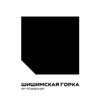Art residence is. Formats and principles

Art-residence is a word that — like any loan translation — can denote anything. In Russian cultural industries, it has a vast array of meanings: any project that implies (joint) presence of artists in some place for more than a few days can be called an art residence, provided that their stay is not exclusively related to an exhibition setup or a presentation of a project. In a broader context, this term can refer to bars, hotels or other developer’s initiatives, in which preferred tenants belong to the creative sector. Nevertheless, the word art residence also has a rather narrow professional meaning. In this case, art residence is defined as a format for working with artists that includes support for their creative process.
Given the standard that was largely established in Europe over the past one and a half centuries, here are a couple of definitions to be considered. The first one is used in the Policy Handbook on Artists “residencies; it was compiled with the help of the Open Method of Coordination (Working group of EU member states experts on artists” residencies):“Art residencies provide artists and other creative professionals with time, space and resources to work, individually or jointly, in their chosen creative direction with greater awareness and concentration.”The second one — in its brief and least descriptive form — is taken from the French national guide 223 Artistic Residences in France:“Residence can be defined as a presence in a specialized place in order to do an activity in a special context.”
These definitions capture the very essence of the phenomenon, justifying the existence of quite a few variations. Indeed, art residence is a chameleon format that sometimes produces an (mostly false) impression of being flexible, light, cheap, instrumentally applicable, or potentially useful. The setup of residence so as to solve external institutional or corporate problems is a matter of a separate discussion. Firstly, let’s start by looking at the ideal residence format: an independent residence that supports the artist and creative process.

Apart from the artist, there are time, space, resources, infrastructure, and process that considerably define a residence. Actually, all these parameters are variables: they must be further clarified in order to create an integral image of the residence. For instance, an artist may be a curator, writer, or musician; he can be alone, represent a team or come in a group. At the junction of the parameters “artist” and “time” there appears an interesting factor of simultaneity. In fact, artistic process in a residence can unfold in completely different ways, depending on whether the resident should interact with other artists or can enjoy a possibility of utmost individual concentration.
Thus, time in a residence has a relative density (or absolute sparseness) — it depends on the strategy chosen by the resident; the residence is free to determine the length of stay. There can be long-term residences of up to 6 months or even 2 years, but in Russian circumstances the maximum residence period is 3 months, and the most common conditions require an artist to be on site from two weeks. The regular average is 4-6 weeks.
Space or place is a source of the residence’s uniqueness. Everything matters: location, view from the window, transport accessibility, proximity to rare research subjects. Historically, an image of an artistic residence is associated with ideals of silence, tranquility, solitude. In recent decades, sites located in large cities and, preferably, having access to active artistic life, have become very popular. Writers' residences still tend to take place in remote corners, and in Russia, due to long distances and transport mobility features in the country, almost all residences that are located outside Moscow are remote or geographically specific.
Therefore, location often determines the source of topics, and the residence focuses on industrial issues or other subjects suggested by the place: border, cold, darkness. Often the place can also impose a production resource: proximity to factories or scientific centers, abundance of this or that material, competencies of the residence’s parent organization in one or another form of art. However, talk about the resources in a residence includes talking about the basic infrastructure that it should have. It’d be useful to describe the place for work and/or living, equipment, and management, communication means, as well as the basic institutional fit.
As a rule, answers to the questions about the infrastructure tell a lot about the goals and, therefore, about how the process is built in the residence. For example, if the residence is equipped with an exhibition hall, it is likely that a resident is expected to prepare a final exhibition. If the residence is designed for simultaneous stay of several or many artists, most likely, staying in the residence involves communicating with neighbors. If the residence is a part of a museum or an educational project, one can expect educational or other public meetings on the agenda. If the residence is a part of a festival, the creation of a new piece is probably required.
To sum up, we can claim that an art residence is an equation with six variables: residents, time, space, resources, infrastructure and process. Each organizer gives his own answers and receives his own variation of the artistic residence. That is why, the number of residential formats may be overwhelming and sometimes even discouraging. In order to highlight the complexity, let us add that this equation does not exist in isolation: it is always installed in a particular computing system, tradition, and cultural context. In order to clarify the issue, we will continue to look into the variables (and their derivatives) in the next texts within our series.
Text: Zhenya Chaika, curator, Shishim Hill artists-in-residence
Translation: Anna Bubel Goldfarb
